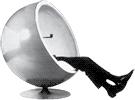Repair of Windsurf Boards
Small dings DRAM and WOOD
For small dings in your board, like ones that do not go deep into your board and are smaller than your little finger, you can repair by filling it in with good quality epoxy filler (2 part mix).
Incorrect or sloppy repairs may permanently damage your board, or reduce its value considerably. A claim process can be painful and time consuming, - generating frustration and delays if you do not follow the proper procedures. Lack of maintenance might shorten the life time of your board dramatically. All Starboards are manufactured to the highest of standards with strict quality control and low tolerance margins. Our Wood boards are wrapped with carefully selected Australian pine for extra stiffness and impact resistance. They are light weight performance boards. Please treat them as such.
Make sure the exposed area is super clean with no grease or dirt by sanding rigorously the inside of the ding. The rough surface will also give good adhesion between board and filler.
Apply the filler -and once it's fully cured, you can sand down to level it with the rest of the board. To achieve a good finish - Start sanding with a lower grade paper (100 grit) then gradually increase (180, 360). The last ones should be 600 then 1000 grit paper, both with water.
DO NOT use polyester based filler, even those with mixed fibreglass in them (these are normally used for car body), because chemically they are not compatible with the epoxy used in the board. You can recognise polyester based fillers by the fact that they normally come with a small tube of hardener per tub of filler, as opposed to epoxy fillers which are generally half resin and half hardener.
Once sanded, visit your nearest car paint shop and ask them to match the colour of your board. The best paint to use is again 2-part epoxy paint, but if the ding is really small, acrylic paint can do the trick. The latter is not so scratch resistant though.
If the ding is on the deck, you may want to apply some non-slip again. The best way is to spray clear PU mixed with non-slip beads. As these are hard to find, and easier alternative is to apply a thin coat of epoxy and lightly sprinkle some fine salt on the epoxy before it starts to harden.
Larger dings DRAM and WOOD
For larger dings, it will be necessary to use epoxy resin instead of filler, as well as fibreglass reinforcements.
Clean out the area by roughly sanding the surface to be repaired, as above. Cut out enough fibreglass to cover the entire area. The best fibreglass to use is normally weaved ones at 100g grade. You can also go up to 200g, but bear in mind that 2x100g is more effective than 1x200g. Chopped strand mat can also do the trick. There should be enough fibreglass to fill up the ding already, even without resin. This will be a good indication that the repair will be strong.
However, for deep dings such as a crack in the nose after those big catapults, after you've made sure that the board is dry inside, you need to fill the inside with some polystyrene foam (EPS). Then sand away 2cm either side of the crack - about 1mm deep - and cut the fibreglass accordingly.
Mix the epoxy resin and apply it to the surface. Lay the first layer of glass and wet it out. Then lay the next layer, continue until the repair is covered.
Once cured, sand away and finish as described in the small dings section.
In wood boards, if the wood has been exposed to water or starts cracking, you can sand away the epoxy layer that seals the wood in that area, until you reach the wood layer itself. Sand lightly on this until the wood cracks are smooth again, and let dry.
Apply some epoxy resin and place a layer of good quality nylon cloth over the entire area + at least 3cm, and wet this out with resin too. Make sure you do not wet the entire nylon, but leave a dry 'frame' around the repaired area. This area is to allow you to peel off the nylon once the resin has cured.
You will now have a solid layer of epoxy resin sealing the wood, with a texture due to the nylon. Sand this texture away and blend the new layer of epoxy with the rest of the board by sanding. As for all repairs, start with 100 grit paper going finer up to 600 and 1000 with water.
Source: http://2006.star-board.com/products/assistance/repair.asp
